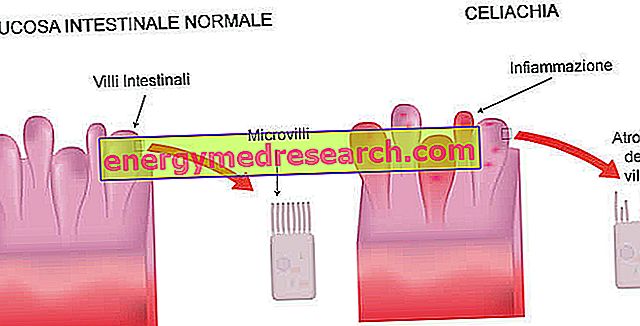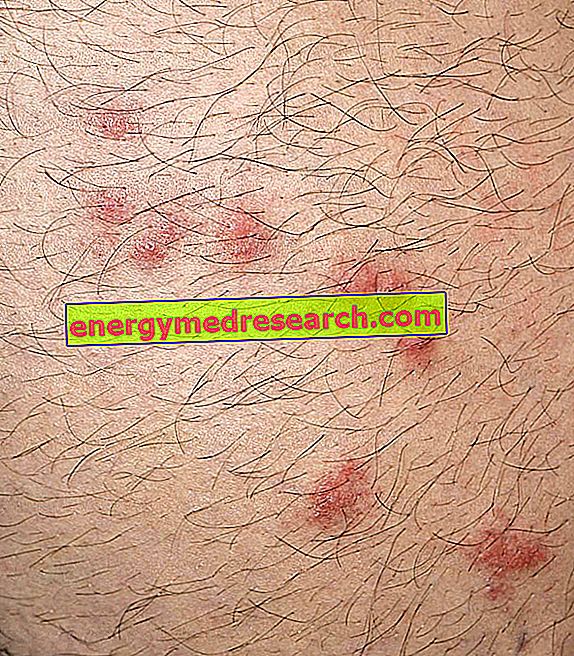Generality
The plasma dosage of anti-endomysial autoantibodies (EMA) of IgA class represents one of the most reliable serological tests among those used in the diagnosis of celiac disease .

In some cases the presence of anti-endomysial autoantibodies is found in people suffering from herpetiform dermatitis, an itchy and annoying skin disease.
Also called "gluten enteropathy", CELIAC DISEASE is a disease characterized by gluten intolerance (protein contained in wheat and its derivatives). In genetically predisposed subjects, the ingestion of gluten is not tolerated. This results in malabsorption and morphological alterations of the intestinal mucosa (atrophy of the villi, hypertrophy of the crypts, thinning of the intestinal wall and infiltration of the mucosa by inflammatory cells). In the organism affected by celiac disease there is also an altered immune system response, which determines the formation of auto-antibodies against gluten (called AGA, anti-gliadin antibodies) and against the intestinal mucosa (EMA or tTG).

What's this
At the level of the intestinal wall, the endomysium is the thin layer of connective tissue that covers the individual muscle fibers and penetrates inside the bundles formed by them.
EMAs are autoantibodies directed against the mucosa, responsible for the continuous damage to the lining of the intestine.
Why do you measure
The dosage of anti-endomysial antibodies (IgA class) has a very high specificity. In case of positive anti-transglutaminase IgA (tTG) antibodies, their research is the most important laboratory test to exclude or confirm gluten intolerance.
The examination of anti-endomysial antibodies (IgA class) therefore contributes to establishing the diagnosis of celiac disease.
The dosage of EMA is indicated by the doctor in the presence of symptoms such as:
- Chronic diarrhea and vomiting;
- Flatulence;
- Abdominal pain and / or swelling;
- Anemia;
- Unusual weight loss;
- Fatigue and fatigue;
- Muscle weakness;
- Depression and other mood disorders;
- Skin eruptions;
- Joint and bone pain.
In children, in the case of celiac disease, other symptoms may occur, including:
- Growth delay;
- Excessive and recurrent irritability;
- I made the color too light.
Anti-Endomysium and Anti-Transglutaminase antibodies
The diagnostic importance of the IgA class anti-endomysial autoantibody (EMA) assay has been reduced by the discovery of Dieterich et al., Who demonstrated that the autoantigen recognized by anti-endomysial antibodies is tissue transglutaminase.
Today, the serum determination of anti-transglutaminase (anti-tTG) antibodies has largely supplanted that of EMAs, becoming the first-line biochemical investigation and first choice for the diagnosis of celiac disease. Eventually, IgA class antiendomysial antibodies can be assayed to confirm the diagnostic significance of anti-transglutaminase antibody positivity; this is because a non-negligible percentage (2-5%) of people positive for the anti-tTG antibody test is not affected by celiac disease but by other diseases, such as Crohn's disease, ulcerative colitis, systemic lupus erythematosus or other inflammatory diseases, chronic allergies and liver diseases.
The usefulness of the dosage of the anti-endomiso anticoripi to monitor the celiac's response to a gluten-free diet is scarce; these antibodies can in fact remain positive at low levels in about 15% of gluten-free celiacs. For this purpose the dosage of anti-gliadin antibodies (AGA) is certainly more suitable.
Normal values
Normally, anti-endomysial antibodies must be absent (ie the search for EMAs gives a negative outcome).
- Reference value - EMA: negative;
- positive> 10 U / ml.
Note : the reference interval of the exam can change according to age, sex and instrumentation used in the analysis laboratory. For this reason, it is preferable to consult the ranges listed directly on the report. It should also be remembered that the results of the analyzes must be assessed as a whole by the general practitioner who knows the patient's medical history.
EMA Alti - Causes
When the values of anti-endomysium antibodies are high, it is likely that the person is suffering from celiac disease. In general, the greater the presence of these antibodies, the more severe the gluten intolerance.
High EMA values are also found in patients with dermatitis herpetiformis (a gluten-sensitive disease that causes an itchy rash).
EMA Bass - Causes
If no anti-endomysium antibodies are found in the blood, it means that the patient is not affected by autoimmune or celiac disease. Low levels of anti-endomysial antibodies are not usually associated with medical problems and / or pathological consequences; therefore, they are not considered clinically relevant.
How to measure it
The search for anti-endomysial antibodies (EMA) is carried out through a simple blood sample to be taken fasting.
Preparation
The dosage of anti-endomysial antibodies is a laboratory analysis that does not require any specific preparation.
Interpretation of Results
The person does not suffer from celiac disease when the test is "negative" or "absent", while the disease is present if the exam is "positive" or "present"; the test has a specificity close to 100%, so practically all patients who test positive for the anti-endomysial autoantibodies are actually celiac.
Even 70% of patients with dermatitis herpetiformis test positive.



